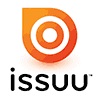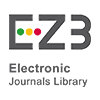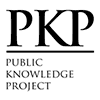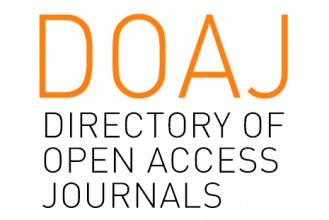English Speaking Anxiety Among High Degree Students of English Education Study Programs Bau-Bau Universities
Abstract
This study aimed to analyze the levels of speaking anxiety among students, evaluate the key factors contributing to students' speaking anxiety when using English, and explore strategies based on how students cope with anxiety. This study used a mixed-method design with 75 quantitative and 15 qualitative samples of 5th-semester students from Dayanu Ikhsanuddin University Bau-Bau in the 2023/2024 academic year. The instruments used were questionnaires and interviews. The content validity of the instruments was determined by seeking consideration from one expert (expert judgment) who stated that the instruments used were valid after revision. The reliability estimation of the instruments was calculated using the alpha coefficient (Cronbach's Alpha) and deemed reliable. To determine the factors that contribute to speaking anxiety and the fear of making mistakes among students when using English, and to collect data, descriptive analysis was used for quantitative data and thematic analysis for qualitative data. The results showed that the majority of students experienced moderately high levels of speaking anxiety. Specifically, only 6.67% of students had very low anxiety, 8% had moderately low anxiety, 16% had moderate anxiety, 38.67% had moderately high anxiety, and 30.67% experienced very high anxiety. Then, from the results of the interview, various anxiety factors and strategies for dealing with anxiety were identified, and results of the interview, the authors concluded several factors that cause' speaking anxiety, where anxiety factors included internal and external factors consisting of five points, namely: Fear of making mistakes, Lack of self-confidence, Lack of Mastery of Material, Fear of Negative Evaluation, Lack of practice speaking. Meanwhile, strategies used by students include Positive Thinking, Physical Techniques (distractions), Breathing Techniques, Peer Support, Self-confidence, Self-motivation, Relaxation, and Spiritual.
Keywords
Full Text:
PDFReferences
Amiri, Paria, et al. "The effect of distraction techniques on pain and stress during labor: a randomized controlled clinical trial." BMC pregnancy and childbirth 19 (2019): 1-9.
Anne Burns, Jack C. Richards. The Cambridge Guide to Learning English as a Second Language.; 2018.
Asnawi, Asnawi. "The effects of immersive multimedia learning with peer support on speaking skill among male and female students." Studies in English Language and Education 2.2 (2015): 103-117.
Chatton, August N. Ampuhnya Berpikir Positif. Saufa, 2016.
Charoensukmongkol, Peerayuth. "The role of mindfulness in reducing English language anxiety among Thai college students." International journal of bilingual education and bilingualism 22.4 (2019): 414-427.
Creswell, John W. Educational research: Planning, conducting, and evaluating quantitative and qualitative research. pearson, 2015.
Damayanti, Maria Eva, and Listyani Listyani. "An analysis of students’speaking anxiety in academic speaking class." Eltr Journal 4.2 (2020): 152-170.
Deveci, Isa, and Salih Cepni. "The effect of entrepreneurship education modules integrated with science education on the entrepreneurial characteristics of pre-service science teachers." Social Inquiry into Well-Being 15.2 (2017): 56-85.
Farmer, Thomas W., et al. "Promoting inclusive communities in diverse classrooms: Teacher attunement and social dynamics management." Educational Psychologist 54.4 (2019): 286-305.
Horwitz, E. K. (2017). On the misreading of Horwitz, Horwitz and Cope (1986) and the need to balance anxiety research and the experiences of anxious language learners. In C. Gkonou, M. Daubney & J. M. Dewaele (Eds.), New insights into language anxiety: Theory, research and educational implications (pp. 31-47). Bristol, UK: Multilingual Matters.
Horwitz, Elaine K., Michael B. Horwitz, and Joann Cope. "Foreign language classroom anxiety." The Modern language journal 70.2 (1986): 125-132.
MacIntyre, Peter D. "An overview of language anxiety research and trends in its development." New insights into language anxiety: Theory, research and educational implications (2017): 11-30.
Mawardah, Sakina, Farah Hana Zinan, and Iman Santoso. "An analysis of foreign language reading anxiety to EFL learners." PROJECT: Professional Journal of English Education 2.3 (2019): 263-269.
Ramayani, Yuniar Karisma, Ririn Ambarini, and T. Sri Suwarti. "An Analysis of Students’ speaking anxiety in english classroom." proceeding of english teaching, literature and linguistics (eternal) conference. vol. 2. no. 1. 2022.
Rahman, Desyfani Zaenab, and Nita Kaniadewi. "The relationship between students’level of positive thinking and their English-speaking anxiety." salee: Study of Applied Linguistics and English Education 4.2 (2023): 537-550.
Rao, Parupalli Srinivas. "The role of English as a global language." Research Journal of English 4.1 (2019): 65-79.
Rahmanda, Reka. The relationship between peer social support and anxiety facing presentations to UIN Suska Riau students. Diss. Sultan Syarif Kasim State Islamic University, Riau, 2020.
Sari, D. (2017). Speaking anxiety as a factor in studying efl by Darmaida Sari 1.
Suryadi, Hendra. "An analysis of students’anxiety in speaking." NUSRA: Jurnal Penelitian Dan Ilmu Pendidikan 2.1 (2021): 47-53.
Schutz, E. R. (2019, October 4). Stephen Krashen's theory of second language acquisition.
Sultana, Nafisa, and Bedoura Jamin. "Overcoming fear to improve English speaking skill." International Journal of Research and Innovation in Social Science 5.12 (2021): 17-27.
Siagian, U. M. (2017). An Analysis of Students’ Anxiety in Speaking. VIII (1), 3– 9.
Taheri-Kharameh, Zahra, et al. "Negative religious coping, positive religious coping, and quality of life among hemodialysis patients." Nephro-Urology Monthly 8.6 (2016).
Yaikhong, Kriangkrai, and Siriluck Usaha. "A Measure of EFL Public Speaking Class Anxiety: Scale Development and Preliminary Validation and Reliability." English Language Teaching 5.12 (2012): 23-35.
DOI: http://dx.doi.org/10.18415/ijmmu.v12i5.6884
Refbacks
- There are currently no refbacks.
Copyright (c) 2025 International Journal of Multicultural and Multireligious Understanding

This work is licensed under a Creative Commons Attribution-NonCommercial-NoDerivatives 4.0 International License.
https://ijmmu.com
editor@ijmmu.com
facebook.com/ijmmu
Copyright © 2014-2018 IJMMU. All rights reserved.



































